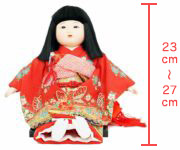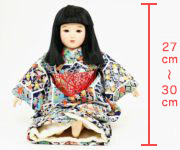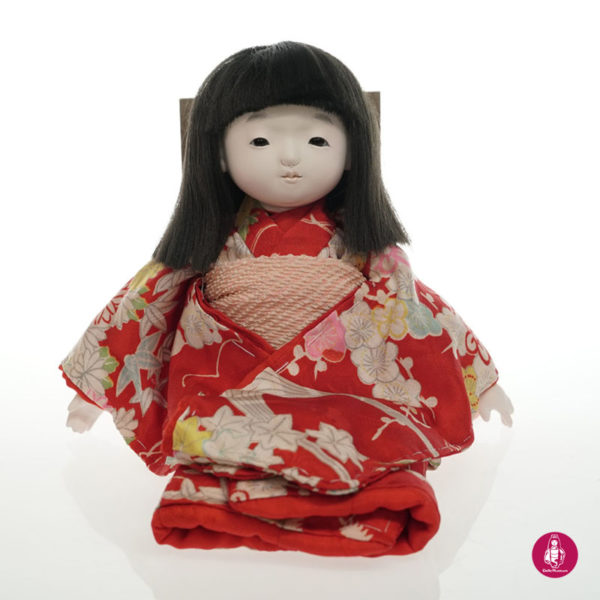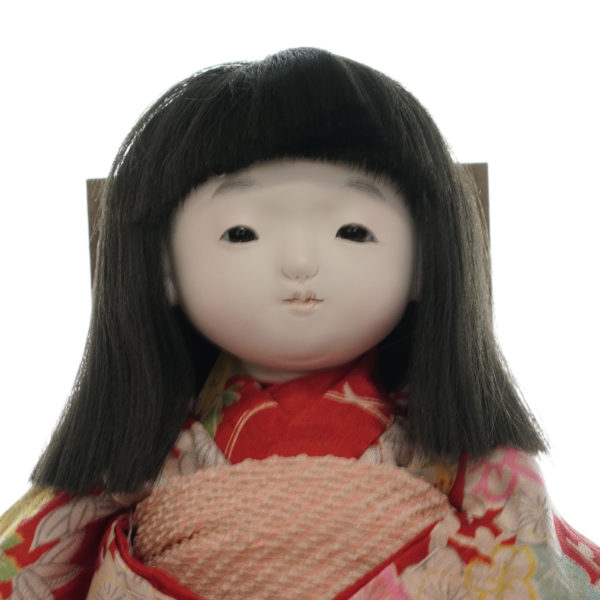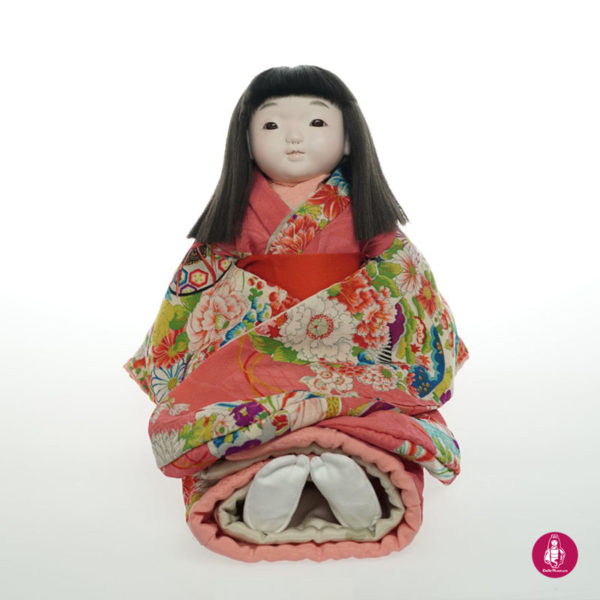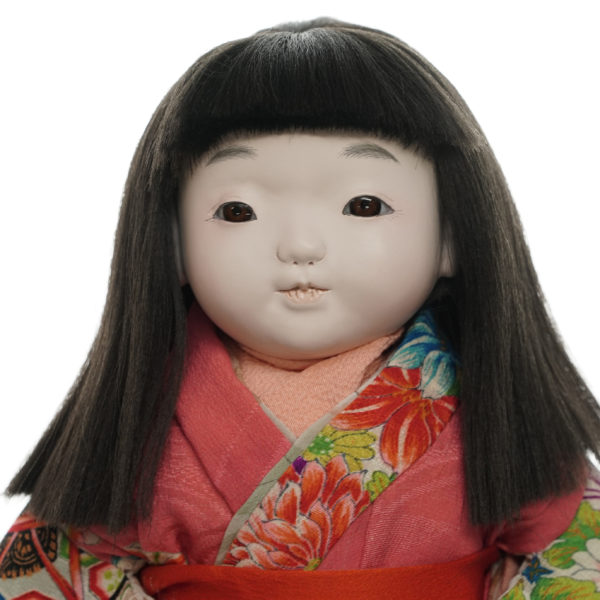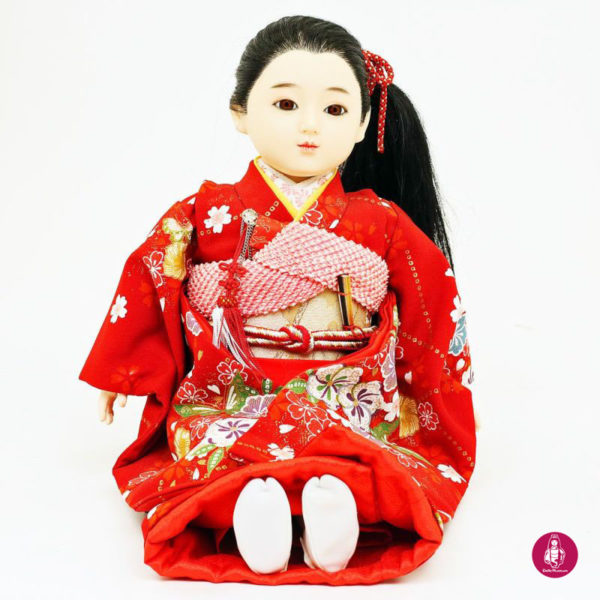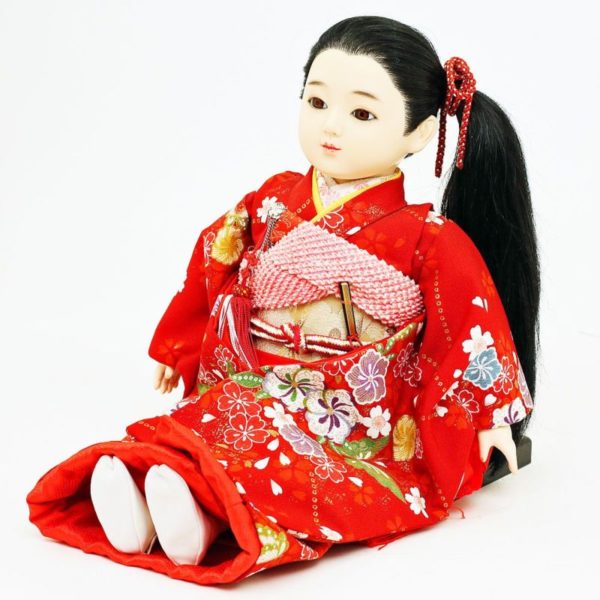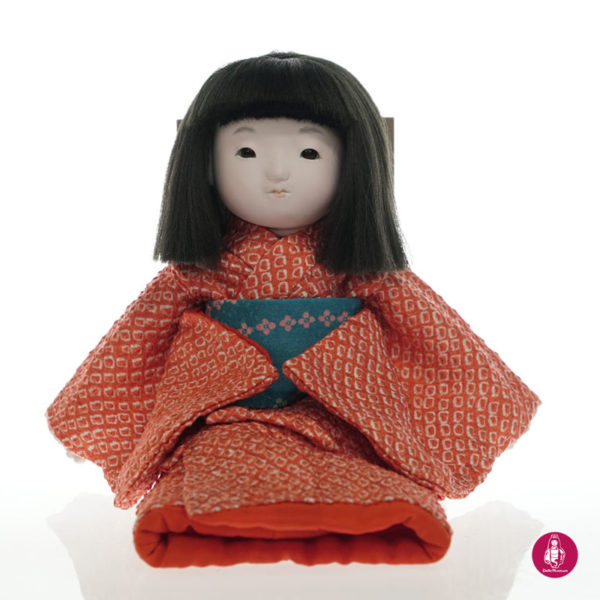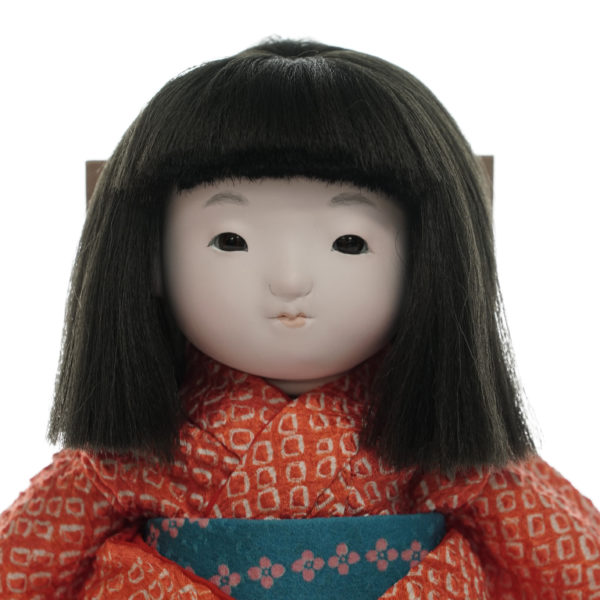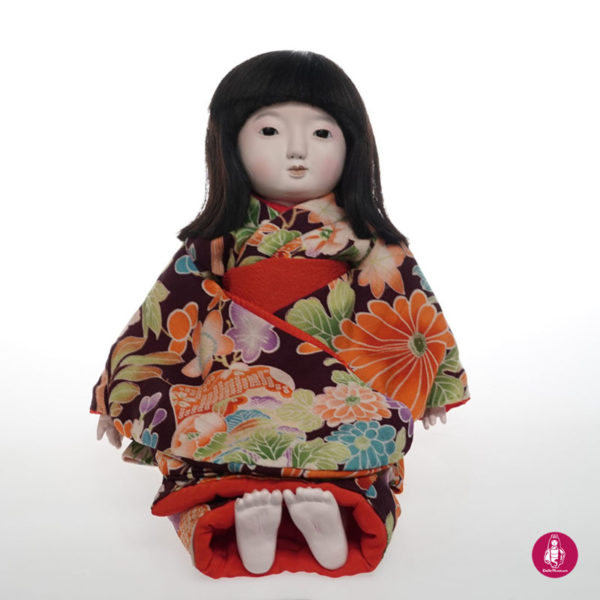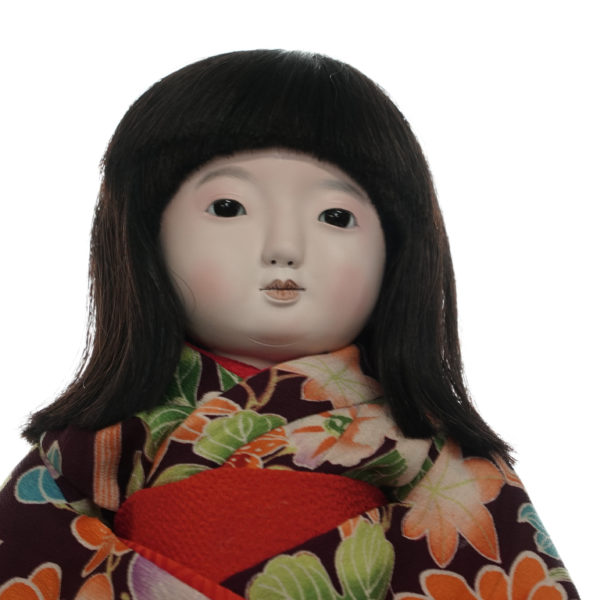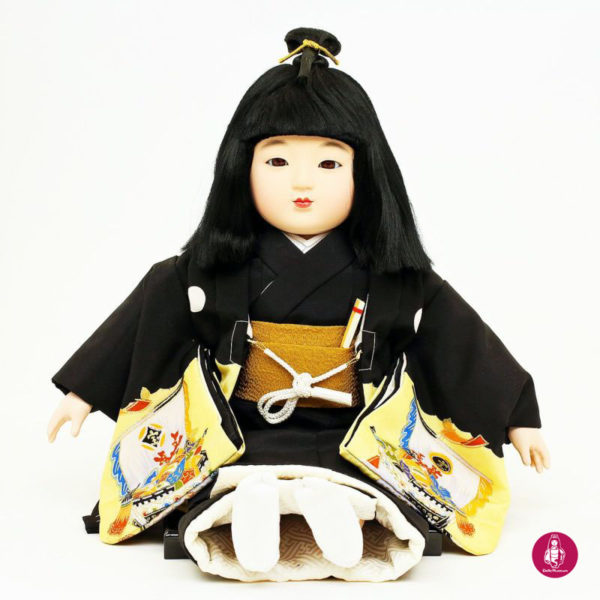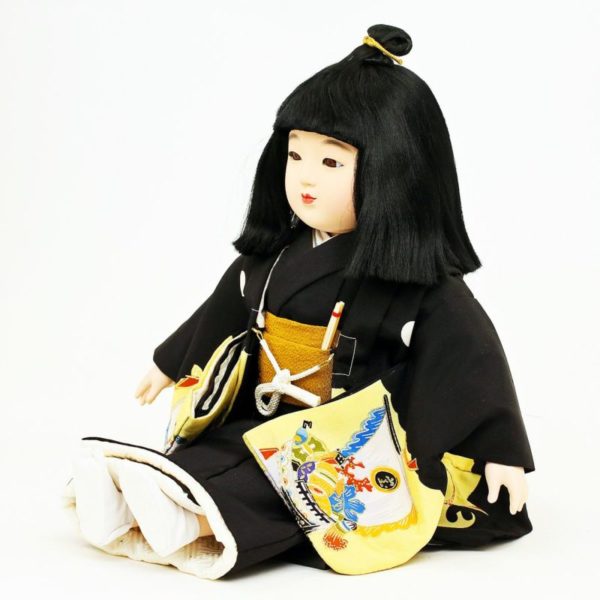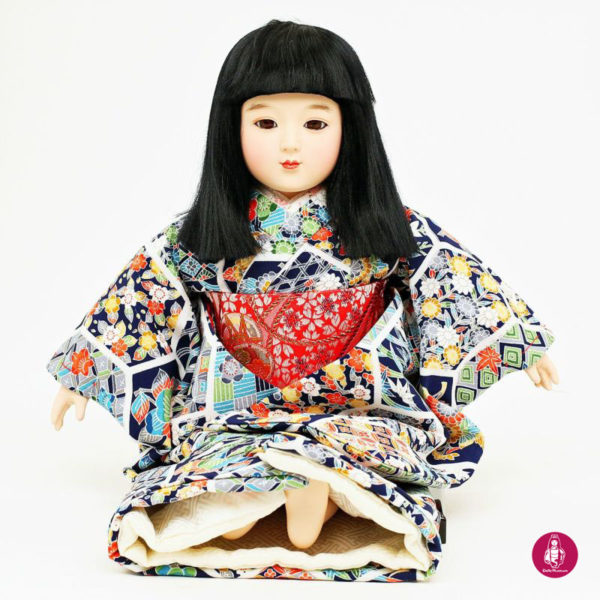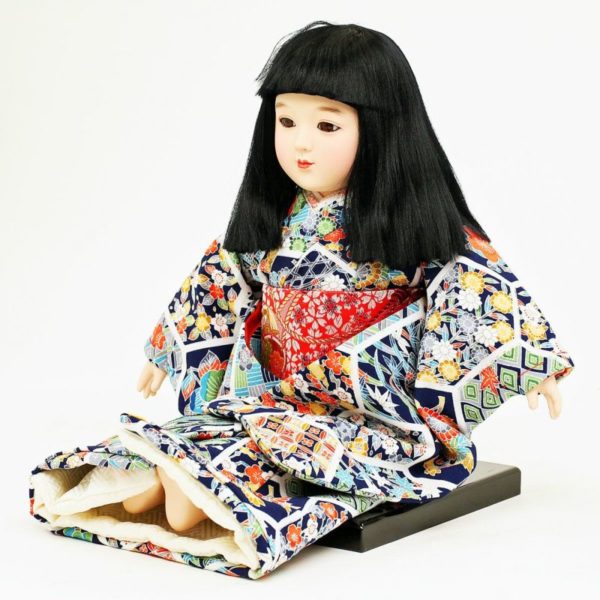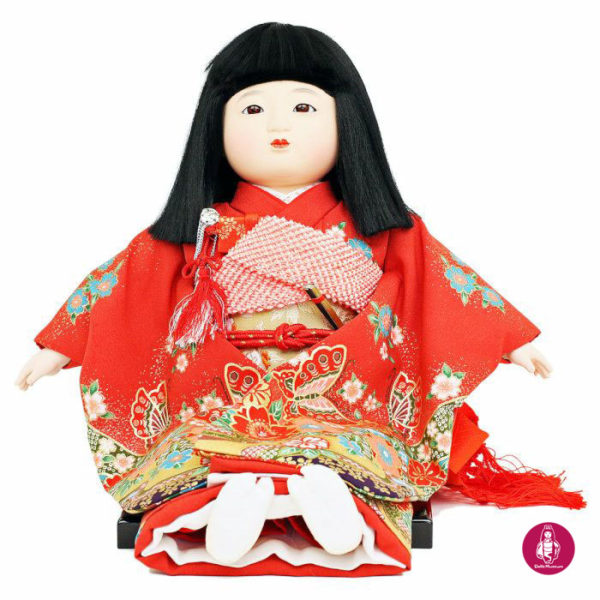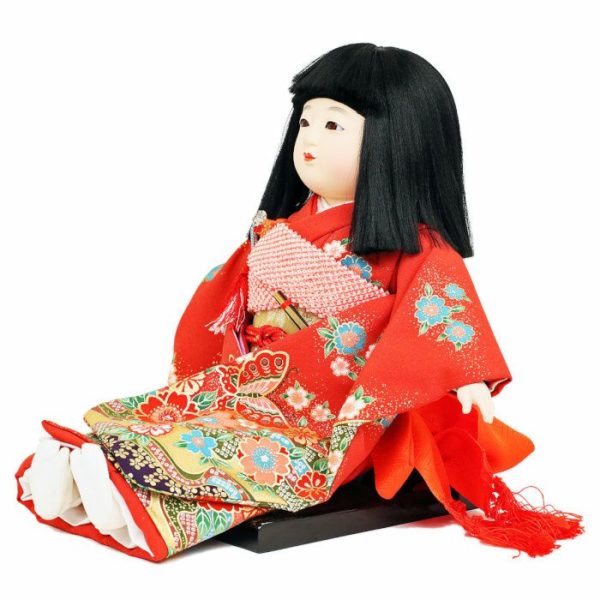Showing all 8 results
-
$492.75
Description The doll wears a Kimono (traditional Japanese costume) which is designed with Ume (Japanese apricot), Kiku (Chrysanthemum), Momiji (maple) and Sasa (bamboo grass) patterns. This Obi (sash worn with a kimono) is classified as Hekoobi. Initially, it’s used by men but today, it’s common that children or even ladies use it. The flowering of Japanese apricot blossoms announces the arrival of spring. People appreciate its adorable petal shape, scent and characteristic branches. This pattern represents patience, vitality or prosperity of future generations. Chrysanthemum flower is very popular designs among Japanese people. As its petals form radially, it’s linked to the Sun. This flower represents the eternal youth, the longevity…
-
$1,042.35
Description The doll wears a Kimono (traditional Japanese costume) which is designed with Botan (peony), Kiku (chrysanthemum), Tsubaki (camellia) and Matsu (pine tree) patterns. Obi(sash worn with a kimono) is dyed red. Lots of peony flowers bloom in the whole of this cloth. Peony flower pattern represents happiness, wealth or perpetual youth and longevity. It has been expressed as one of the good meaning patterns, and believed as a sign of the rich harvest of the year. Chrysanthemum is one of the most popular designs among Japanese people. As its petals form radially, it’s linked to the Sun. This flower pattern represents the eternal youth, the longevity or good health.…
-
$663.31
The doll wears a Kimono (traditional Japanese costume) which is designed with Sakura (cherry blossom) and Chou (butterfly) patterns. Obi (sash worn with a kimono) is dyed gold and designed with Botan (peony) or Houou (fenghuang) patterns. A tradition says that cherry blossom is the symbol of rich harvest. Butterfly pattern has been enjoyed for Kimono since Momoyama period (1568-1600) in Japan. Samurai loved this pattern not only the reason of its elegant appearance but also its meaning. Butterfly pattern symbolizes immortality so that it’s used for Samurai’s emblems. Peony flower pattern represents happiness, wealth or perpetual youth and longevity. It has been expressed as one of the good meaning…
-
$492.75
Description The doll wears a Kimono (traditional Japanese costume) which is designed with Kanoko-Mon. Obi (sash worn with a kimono) is dyed blue and the flower pattern is designed. Kanoko means the child of deer. Kanoko-Mon is a tie-dye pattern similar to the spots on the back of a child of deer. This Kimono is colored with red. It’s believed that red color will protect us from the evil spirits. The sun, blood or fire are also red so that it’s treated as a holy color. Red also represents vitality or energy. SIZE Vertical Horizontal Depth 19.0 cm 7.5 inches 18.0 cm 7.1 inches 18.0 cm 7.1 inches
-
$2,432.15
Description The doll wears a Kimono (traditional Japanese costume) which is designed with Botan (peony), Kiku (chrysanthemum), Ume(Japanese apricot) and Momiji (maple) patterns. Obi (sash worn with a kimono) is dyed red. Peony flower pattern represents happiness, wealth or perpetual youth and longevity. It has been expressed as one of the good meaning patterns, and believed as a sign of the rich harvest of the year. Chrysanthemum is one of the most popular designs among Japanese people. As its petals form radially, it’s linked to the Sun. This flower pattern represents the eternal youth, the longevity or good health. The flowering of Japanese apricot blossoms announces the arrival of spring.…
-
$663.31
The boy doll wears a Kimono (traditional Japanese costume) which is designed with Takarabune pattern. Obi (sash worn with a kimono) is dyed gold. Takarabune is the sailing ship which loads straw rice bags or treasures. Sometimes the Seven Gods of Good Fortune is designed with it. It’s a good-luck talisman pattern and there is an ancient custom that putting a picture of Takarabune under the pillow to have a good dream on January 2 in Japan. Matsu (pine tree) pattern is designed back of Takarabune. Pine tree keeps its green color throughout the seasons therefore its treated as a holy plant. The color combination of black and gold makes…
-
$467.48
The doll wears a Kimono (traditional Japanese costume) which is designed with variety of flowers patterns and the whole fabric is designed with Kikkou-Mon by white lines. Obi (sash worn with a kimono) is dyed red and Sakura (cherry blossom) or Kodutsumi (small drum) are woven on it. Kikkou pattern describes the shell of turtle. It’s a geometric continuous pattern connecting regular hexagons up and down. Turtle lives a long life therefore turtle and turtle’s shell pattern represent longevity. It can be thought that Kikkou pattern has been familiar to people since ancient times. According to a tradition, cherry blossom is the symbol of rich harvest. It’s said that is…
-
$252.69
The doll wears a Kimono (traditional Japanese costume) which is designed with Sakura (cherry blossom), Ume (Japanese apricot) and Chou (butterfly) patterns. Obi (sash worn with a kimono) is dyed gold and Botan (peony) pattern is woven on it. According to a tradition, cherry blossom is the symbol of rich harvest. It’s said that is why the popular custom, cherry-blossom viewing picnic exist in Japan. The flowering of Japanese apricot blossoms announces the arrival of spring. People appreciate its adorable petal shape, scent and characteristic branches. This flower pattern represents patience, vitality or prosperity of future generations. Butterfly pattern has been enjoyed for Kimono since Momoyama period (1568-1600) in Japan.…

